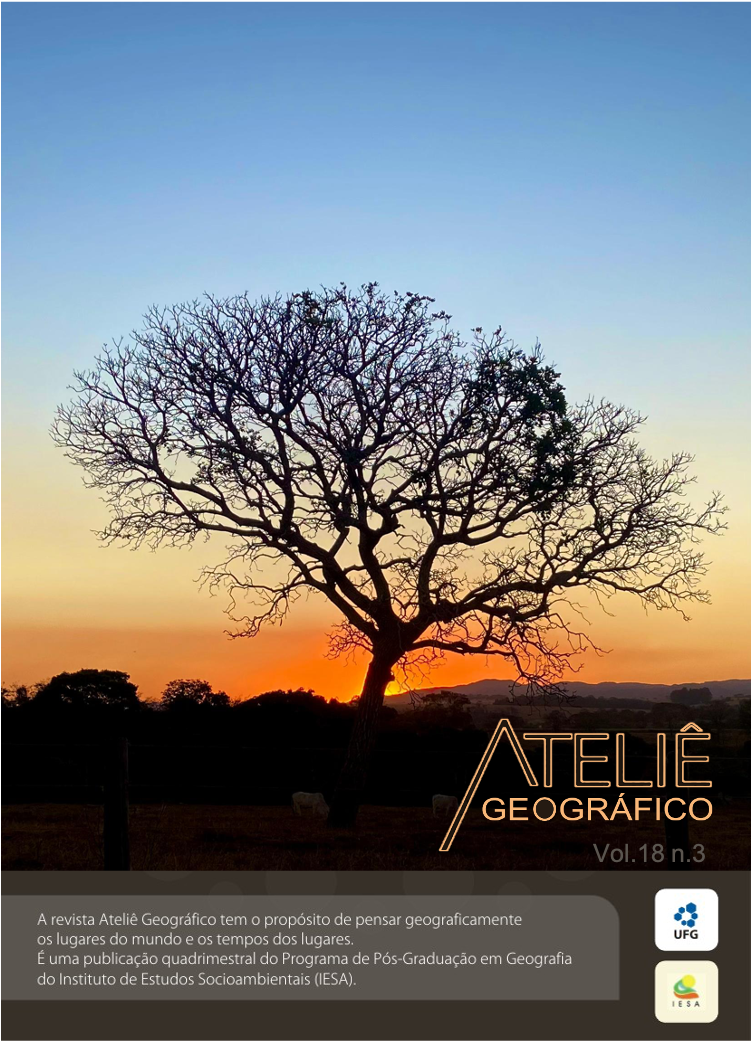Spatial mobility and household arrangements: a typology to reflect on processes of population redistribution in Central Amazonia
DOI:
https://doi.org/10.5216/ag.v18i3.77850Abstract
The present study aims to analyze and classify the spatial arrangements associated with the mobility and spatial distribution of the population in the Amanã Sustainable Development Reserve, in the state of Amazonas. For qualitative and quantitative data, we used the Demographic and Economic Monitoring System of Mamirauá Sustainable Development Institute. It considered the characteristics and composition of domestic units, according to data obtained for 127 localities and 954 households. The analyses lead us to four distinct household arrangements associated with the spatial mobility of individuals and families: 1) continuous movements (migration); 2) semi-continuous movements, with no definitive change of address; 3) seasonal movements, related to production processes, environmental seasonality and search for urban services; and 4) movements between members of multi-location households (dual residence). The results showed the importance of studying the analyzed mobility beyond the concept of migration, bringing reflections on protected area population closer to the more general debate on population redistribution and urbanization in the Amazon.
Downloads
Downloads
Published
Versions
- 2025-02-17 (3)
- 2025-02-17 (2)
- 2024-12-29 (1)
How to Cite
Issue
Section
License
Autores que publicam nesta revista concordam com os seguintes termos:- Autores mantém os direitos autorais e concedem à revista o direito de primeira publicação, com o trabalho simultaneamente licenciado sob a Licença Creative Commons Attribution que permite o compartilhamento do trabalho com reconhecimento da autoria e publicação inicial nesta revista.
- Os autores não serão remunerados pela publicação de trabalhos na Revista Ateliê Geográfico. Além disso, os conteúdos publicados são de inteira e exclusiva responsabilidade de seus autores, ainda que reservado aos editores o direito de proceder a ajustes textuais e de adequação às normas da publicação.
- Autores têm permissão e são estimulados a divulgar seu trabalho online (ex.: em repositórios institucionais ou na sua página pessoal), já que isso pode gerar alterações produtivas, bem como aumentar o impacto e a citação do trabalho publicado (Veja O Efeito do Acesso Livre).


